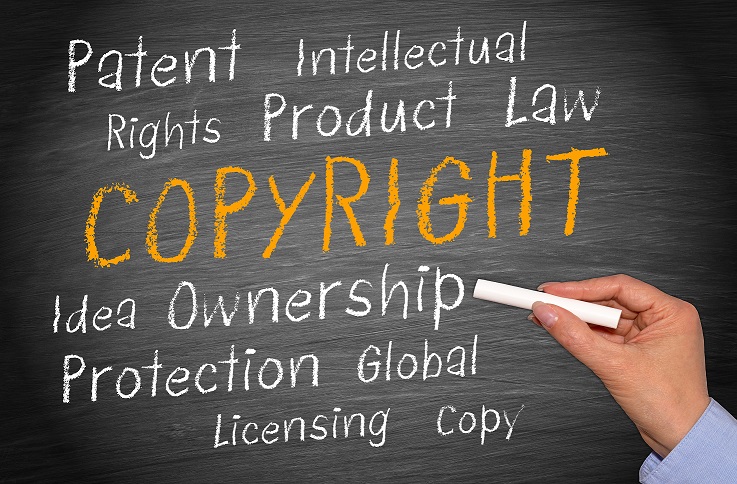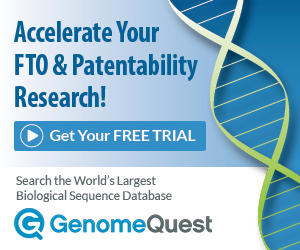 With the United States Supreme Court ruling in Myriad, the enforceability of certain claims in existing gene patents and the broader patentability of genetic material has been cast into a state of some disarray.
With the United States Supreme Court ruling in Myriad, the enforceability of certain claims in existing gene patents and the broader patentability of genetic material has been cast into a state of some disarray.
In this three part series, guest blogger and thought leader Professor Chris Holman at the University of Missouri-Kansas City Law School explores the idea that copyright law rather than patent law may better suit genetic material as intellectual property. Professor Holman authors the well-known Holman’s Biotech IP Blog and is the executive editor of Biotechnology Law Report.
Drew Endy, a professor at engineering at Stanford University, has been called “synthetic biology’s most compelling evangelist” (Michael Specter, Denialism: How Irrational Thinking Hinders Scientific Progress, Harms the Planet, and Threatens Our Lives) and is known for innovative ventures such as the Biobricks Foundation and Registry of Standard Biological Parts. During a 2012 keynote address at a Stanford Law School Conference on Intellectual Property Law and the Biosciences, Professor Endy opined that “given the history in software, there is going to be for the foreseeable future an ever-renewing enthusiasm for exploring the idea of copyright” for synthetic biology. He noted that “literally every student I see …. who connects with property rights immediately presumes that you should be treating this stuff like code, and they are familiar with using copyright in that context.” Indeed, given the broad availability of copyright protection for software, and the growing analogy between engineered genetic code and computer code, it has long struck me as anomalous that copyright for engineered DNA has yet to be given more serious consideration. The potential applicability of copyright to engineered DNA has long been noted, particularly by a small number of academics who understand the theoretical underpinnings of copyright protection for software and recognize the similarity between genetic and computer code.
The first formal treatment of the subject of which I am aware is Copyright in Living Genetically Engineered Works, a law review article by Professor Irving Kayton published in 1982. Professor Kayton is well known to patent attorneys as the founder of the Patent Resources Group (PRG), the original provider of patent bar review courses – I met Professor Kayton in the mid-1990s while I was taking the PRG patent bar review course in Los Angeles, my first real exposure to patent law while I was still working as a postdoc. But in the early 1980s he was giving a CLE presentation on copyright law, and one of the attendees asked him whether, given the copyrightability of computer programs, engineered DNA sequences might be considered copyrightable subject matter. Kayton admits that he was initially “shocked and perplexed” by the suggestion, but as a good scholar he could not simply dismiss the idea out of hand, and the more he thought about it the more convinced he became that in fact, if software is copyrightable, there is no valid legal basis for excluding engineered DNA from copyright protection. He wrote up the results of his legal analysis in the prescient 1982 article, which concluded that “[u]nder certain circumstances, from a practical as well as legal viewpoint, copyright protection may be the only or the most effective way an ‘author’ can protect a valuable genetic ‘work.’”
Since then a number of other scholars have come to a similar conclusion – two of the most thorough treatments of the subject of which I am aware were independently published in 2011 by myself and Professor Andrew Torrance of the University of Kansas (a law professor who, like myself, practiced as a biotechnology patent attorney prior to entering academia). See Christopher M. Holman, Copyright for Engineered DNA: An Idea Whose Time Has Come, West Virginia Law Review, Vol. 113, pp. 699-738 (2011); Andrew W. Torrance, DNA Copyright, Valparaiso Law Review, Vol. 46(1), pp. 1-41 (2011).
I find that most people are initially skeptical of the notion that DNA could be copyrighted, often pointing out that DNA is functional, and assuming that copyright is reserved for more aesthetic works such as music, art, and literature. But the fact is that although copyright has historically been associated with non-utilitarian, aesthetic works, any implicit prohibition against copyright for functional works was shattered in the 1970s and 80s when copyright protection was extended to wholly utilitarian computer programs that are only interpretable by a machine, e.g., a string of zeros and ones encoding instructions for how to manage the air-fuel ratio in an automobile. In other word, the great conceptual leap occurred more than 30 years ago when the law began treating functional computer code as a copyrightable “literary works” – by comparison, a further extension to encompass engineered genetic code would be relatively minor and incremental.
It is important to emphasize that I am not talking about copyright for naturally-occurring sequences, or even sequences that vary only slightly from a naturally-occurring precursor. Copyright would not create property rights that would encompass people’s genes, for example, a concern I often hear raised, analogous to the pervasive myth that patents somehow allow biotechnology companies to “own” people’s bodies. As explained in my West Virginia Law Review article, copyright law requires originality and some minimal level of creativity, which should effectively bar copyright protection for genetic sequences that come too close to anything that occurs naturally. In fact, it is conceivable that copyright law could require a more substantial departure from nature than patent law, depending upon how the courts interpret the requirements of creativity and originality in the context of DNA. Bear in mind that prior to the Supreme Court’s recent Myriad decision patents were routinely granted on DNA sequences identical to naturally-occurring genes, and even post-Myriad all that appears to be necessary for patent eligibility is a “marked difference” from nature (whatever that means).
In order to fully appreciate my argument for extending copyright to engineered DNA, it is necessary to understand the underlying basis for permitting copyright on computer programs, and then recognize the functional similarity of computer code and genetic code. A computer program is essentially a set of written instructions directed towards a machine that direct the machine to perform a series of functions, and the law has come to accept this set of instructions as a copyrightable “literary work.” An engineered DNA sequence is likewise a set of written instructions directed towards a machine, albeit a biological machine, which directs that machine to perform a series of biological functions. A typical gene sequence, for example, is a set of instructions directing a cell to incorporate amino acids in in a specified order. At a larger scale, an engineered genetic construct can encode a complex set of instructions involving the regulation of expression, feedback loops, and the like to achieve increasingly sophisticated functions – the sort of complex bioengineering commonly referred to as synthetic biology. A nice example is the recently reported engineering of a 23 gene opioid production pathway in yeast by Christina Smolke’s group at Stanford. See Galanie, S. et al., Complete biosynthesis of opioids in yeast, Science 349, 1095–1100 (2015).
Interestingly, it is not uncommon for today’s synthetic biologists to refer to genetically modified cells as “machines” and genetically engineered DNA as “code,” and to the use of this code to “program” cells. As I explained in another law review article a few years back, the engineering of computer code and genetic code are increasingly converging as biotechnology transitions towards synthetic biology. See Christopher M. Holman, Developments in Synthetic Biology Are Altering the IP Imperatives of Biotechnology, Vanderbilt 17 J. Ent. & Tech. L. 385 (2015). It is not surprising that Professor Endy’s students, having experience in both software engineering and synthetic biology, are struck by the disparate treatment under copyright law. Given the similarity of computer code and genetic code, why has copyright been extended to one but not the other?
[keep an eye out soon for the second blog in this series…]
About Chris Holman
Chris Holman is a Professor at University of Missouri-Kansas City Law School, as well as the author Holman’s Biotech IP Blog and Executive Editor of Biotechnology Law Report. GQ Life Sciences is thrilled to have him be a guest blogger.



